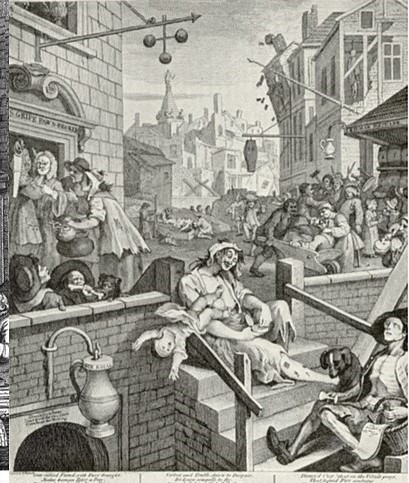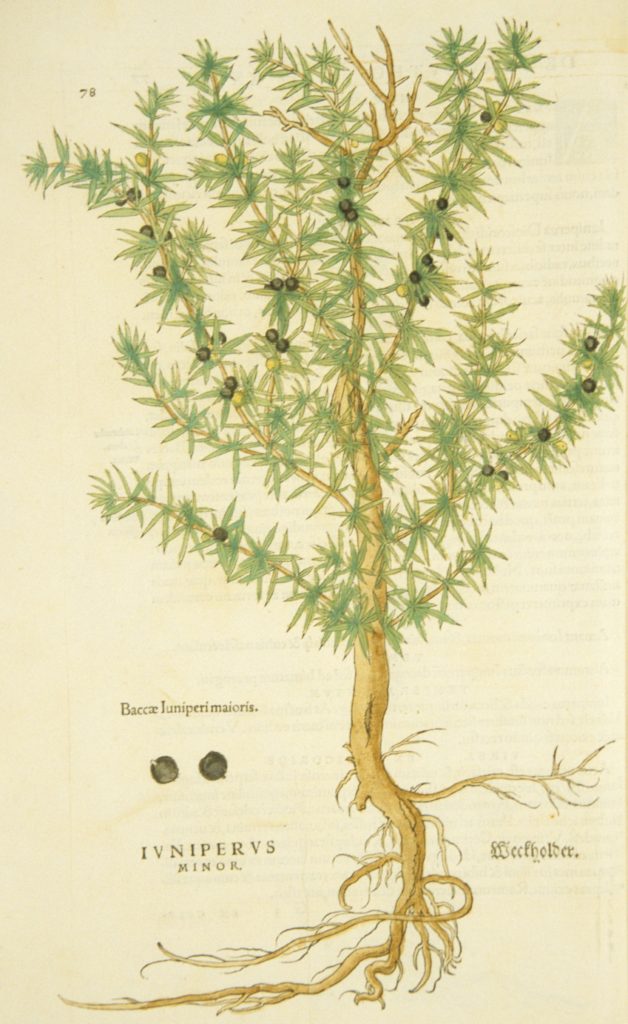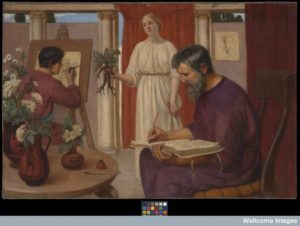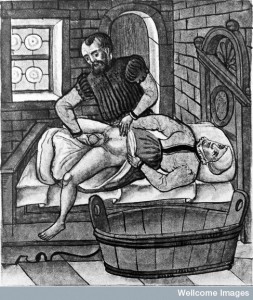
Today pubs and bars are filled to the brim with wondrous varieties of Gin. The spirit has been resurgent in recent years becoming the fashionable drink of discerning customers. Its varied flavours created through the use of different botanical blends broadens its appeal, but the crucial ingredient in this tempting tipple remains the juniper berry.
Gin in eighteenth-century England had a bad reputation. It was connected to drunkenness and disorderly behaviour. This was epitomised in William Hogarth’s famous depiction ‘Gin Lane’ where a decidedly drunk mother can be seen dropping her baby. While gin was problematic, the juniper berry itself was lauded as being a useful medicinal ingredient, capable of curing a range of common complaints.

In 1682 Christopher Wilkinson published a book discussing Elder and Juniper berries. Opening the discussion he proclaimed that:
These two Berries are so Celebrated in many Countries, and so highly recommended to the World by several famous Writers, and Practitioners, that they need not desire any Varnish, or Argument from me. The simple Decoctions of them sweetened with a little fine Sugar-Candy will afford Liquors so pleasant to the Eye, so grateful to the Palate, and so beneficial to the Body, that I cannot but wonder after all these Charms, they have not as yet been Courted and Usher’d into our Publick Houses”.1
He noted that these exceptionally beneficial berries were ‘so common, and cheap, that they may be purchas’d for little or nothing. Wilkinson explained that many northern nations used juniper berries ‘as we do Coffee‘ and tea and that in Lapland they adored the drink made in this way. 2
The medicinal properties of the berries were lauded by Wilkinson. He stated that ‘The Learned Mr. [John] Evelyn will tell you what great kindnesses he has done to his Poor sick Neighbours, with a Preparation of Juniper-Berries’.3 Juniper berries, he said, were especially used to cure kidney and bladder stones and wind colic. He advocated a mixture made from the spirit of the berries, a salt of the berries and an oil of the berries as a medicine for coughs, consumption, gout, palsy, lethargy, epilepsy and bad digestion.4
Wilkinson was not alone in describing the medicinal properties of these berries. Several botanical writers included this information in their books. A 1694 edition of John Pechey’s Herbal claimed that juniper berries were ‘good for a cold Stomach, and are good against Wind and Gripes’. Pechey also claimed that they provoked urine, expelled poison from the body and helped cure diseases that affected the head. An oil made from the juniper tree helped cure tooth-ache.5
An anonymously author herbal published around 1690 offered a vast list of diseases and ailments that juniper was used for, suggesting that some people at least viewed it as a sort of cure all. The author described how
Juniper groweth in Woods and Copses, is under the Sun hot in the third, dry in the first degree. It is an excellent Antidote against all Infections, resisting the Plague and venomous Beasts, opens the Urinary Passage and Stomach, curing shortness of Breath, Drops, Consumption, Convulsion, Pain in the Belly and Side, Rupture, gives speedy Delivery [to women in labour], strengthens the Memory, clears the Sight, comforts the Brain, cureth Gout, Scurvy, Leprosy, Scab, Itch, and Piles; all this, and more, it performs by taking the Berries powder’d in Wine.6

This anonymous author emphasised – like Wilkinson – that Juniper berries were easily accessible and that the preparation of them was simple. He implied then that they offered a very suitable remedy for those without the financial means to seek the help of a physician or apothecary.
The writers followed a long tradition of talking about the qualities of juniper berried. The herbalist John Gerard described them in his major botanical work the Generall Historie of Plants published originally in 1597. Gerard explained that Galen ( born CE 129 – died c.210) and Dioscorides (born c. CE. 40 – died c. 90) had both discussed the uses of the plant and its berries.7 In addition to the recommendations we have already seen Gerard claimed that the berries were particularly good for the ‘Chin cough’ in children, where they ”rise up raw, tough and clammy humors, that have many times bloud mixed with them’.8
So before the Gin craze swept across England the humble juniper berry was viewed as a medicinal marvel able to help with chest, skin, and bladder complaints. Whereas in the eighteenth century writers, like the natural philosopher Stephen Hales, lamented that gin and brandy narrowed the blood vessels, burned the lungs, wore out the stomach, caused obstructions and stoppages of the liver, jaundice, dropsy (oedema), and ‘many other fatal Diseases’.9
For more about the history of ‘vodka’ or distilled spirit of juniper berried in the early modern period see this excellent blog post by Clare Griffin on the Recipes Project Blog.
__________________________________________________________________
- Christopher Wilkinson, The Natural History of Coffee, Thee, Chocolate, and Tobacco (London, 1682), p. 26-7.
- Ibid
- Ibid
- Ibid, p. 28
- John Pechey, The compleat herbal of physical plants (London, 1694), p.110.
- Anonymous, An English Herbal, or, A discovery of the physical vertues of all herbs in this Kingdom (London, 1690), p. 40.
- John Gerard, The herball or Generall historie of plantes. Gathered by Iohn Gerarde of London Master in Chirurgerie very much enlarged and amended by Thomas Iohnson citizen and apothecarye of London (London, 1633), p. 1373.
- Ibid.
- Stephan Hales, A friendly admonition to the drinkers of gin, brandy, and other distilled spirituous liquors (London, 1754), p. 5.





One thought on “The Benefits of Juniper Berries”
Comments are closed.